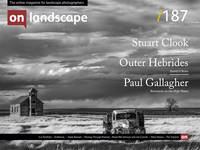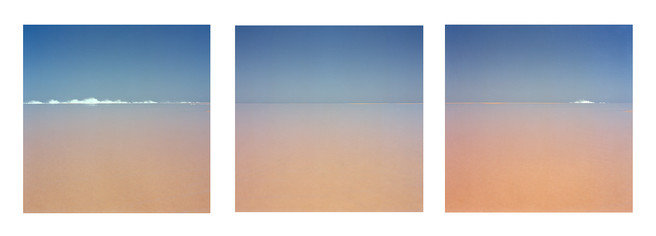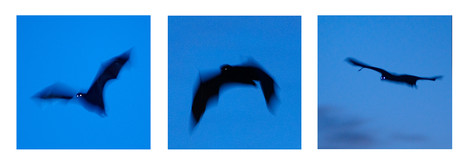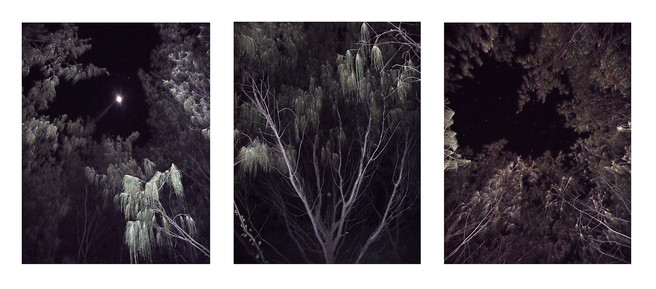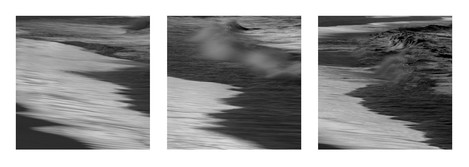Movement, Symmetry and Time

Peter Mason
Peter is a lifestyle photographer and video director based in the beautiful countryside of Rutland. His work takes him all over the world working on commissions for clients like Royal Caribbean, M&S, Warner leisure hotels and the British heart foundation. His personal projects include an ongoing documentary series on Hallaton bottle kicking and the landscape triptychs project seen here.
I remember the feeling of proud excitement as I walked past the headmaster’s office and first spotted a picture of mine stuck to the wall with 4 drawing pins. It was an 8”x 8” picture in a rather tatty mount, the type that used to get sent with an enlargement from Trueprint at the time. I had won the school photo competition and it was the first time I had seen my work exhibited in public.
The picture was of a sunset taken on a school trip to Blackgang Chine in the Isle of Wight. It was shot on a Kodak Instamatic that my sister’s boyfriend had given me, having felt sorry for me after I’d spent a year shooting 120mm film on a plastic camera that I had won in an amusement arcade crane machine. My dad had always made an effort to capture moments from our family holidays on his camera, so I was excited to follow in his footsteps. A real camera took me that much closer to doing this, and I started using it to take photos of my mates, family days out and sunsets (which always seemed to be good in my little corner of Leicester). The camera produced square format images which I diligently stuck into a scrapbook that I still have to this day. That camera and the sunset picture in the Isle of Wight started me on my road to becoming a photographer.
In my teenage years, I loved wandering around the countryside, getting up at dawn and walking across to the fields near my family home to capture whatever I could with my new camera. The landscape wasn’t particularly inspiring; it was fairly flat with a few small clumps of trees and hedgerows around the farmer’s fields. I could always find something interesting to shoot though, whether it was a single tree stood alone in an open space or the dew on the young wheatgrass with the sunrise backlighting the droplets of water.
Forty years later I am working as a photographer still, having managed to persuade a few art colleges I was good enough to give a place to. My work these days is mostly lifestyle photography and video shot for advertising and corporate clients. My paid work is a long way from the landscapes I used to take as a kid but luckily I get to work on my own projects between commissions and landscape photography still fascinate me.
The Triptych
The word ‘Triptych’ originates from the Greek adjective meaning ‘three-fold’ and was adopted by Christians in the early modern period to display altar art on three relief-carved panels. In this period, and as the technique was adopted into Gothic architecture, the centre image was often larger, clearly the intended focus of the work. More recently, however, artists have begun to place equal emphasis on each panel by making them all the same size. I was attracted to the triptych in this form and sought to further the balanced outcome by having each piece focus on the same landscape. In this way, each image is of equal importance but provides new information by showing the subject from a new angle. With each changing frame, I hope that a sense of movement is created that more accurately portrays the changeable scenic reality.
The first time I had the opportunity to use the triptych form was when I was photographing a beach on the Northern coast of Fraser Island, Australia. A very remote area, the beach was deserted, meaning I was able to shoot the environment stripped bare of people. I was shooting on a Hasselblad (the love of the square format hasn’t left me) but wanted to simultaneously capture the detail in the sand and water, along with the distant breaking waves and the remoteness of the scene. Working on a wider lens meant sacrificing at least one of these elements, so I ended up shooting closer segments. Having shot a few polaroids and looked at those in unison, I had the idea to put them together with the skyline acting as a constant. This made the group more of a recognisable set, and my first triptych was created.
Planning Shots
Narratively speaking, the main aim of the triptych form is to show change. This comes with a number of factors to consider in the planning process, as there is a lot to play with when deciding how to present such a constantly changing environment in only a few moments. An important factor to be planned then is the time element. I am amazed by how a landscape can change so strikingly over just a few hours, and this can be accentuated by putting multiple images next to each other. This is particularly powerful in landscape photography, as the slow movement of the weather is emphasised when placed in comparison with a scene from only a few hours before. There is something very powerful about seeing three versions of the same landscape next to each other that could never be witnessed at the same time in reality. Emphasis is placed on the extremity of a change that would usually seem minor.
The change of time can, of course, be just as noticeable when confining the shoot to a few short minutes. Waves crashing on a beach, for example, change through the lens constantly and the transitioning sand and water can be brought to life if seen in triplicate. It gives you more options for getting your message across. Even when a landscape is seemingly static, time is considered in planning the consistency of the pieces. In open areas such as large vistas, triptychs can act almost like a panoramic view, providing more information on the landscape with the only change in pieces being the perspective. Still, though, time is important. If you wait too long to take all three pieces the landscape with inevitably change. If you happen to take one shot when a cloud has gone overhead, that shot will have different lighting to the others. This must all be considered when planning a triptych.
Symmetry is another factor that must be considered more significantly when planning a triptych. Sometimes you can achieve this simply by making the central image more distant, with the side images being more detailed. However, even when they are the same size, three images together will often feel like the central image is the most important with the two images to its side being supporting players. It is important to me that each image could stand up for itself if it were viewed individually. If you have two good images but a third that isn’t quite up to scratch the finished result won’t be as powerful. It's important to make sure all three are strong in their own right. Sometimes triptychs don’t work out as planned and I end up using just a single image on its own. “If in doubt leave it out” is something I repeat to myself often when editing!
Locations
I’ve been very lucky over the years to have worked for many travel companies which have taken me all around the world. I’ve seen some amazing locations and often shot them with a lifestyle element. The jobs are commissions of course so I can’t go off taking up client time on personal projects, however, I have managed to sneak a few shots here and there while travelling around. The images of clouds were mostly taken while travelling between jobs, as were some images I have of the sea taken from a cruise ship job. Many shoots come while on a holiday, wandering around my garden or local countryside locations. I find that gardens and garden wildlife can be great for photographic studies and can work just the same as large landscapes. My project tends to make me look closer at what’s around me, to look for opportunities wherever I might be. My image of the clouds at sunset was taken in Australia too, but could really have been taken anywhere with the right weather and time of day.
I think the most important thing about any sort of photography is simply being out there trying things out. I have never been too technical- the best camera to have is the one in your hand as they say. I tend to be a photographer that will watch the light and how it interacts with the landscape. I love shooting water and clouds for this reason. Shooting any body of water twenty minutes after the sun has gone down always works well when the failing light in the sky is reflected in the water rather than direct harsh sunlight hitting it earlier in the day. The soft muted colours come through to the fore, creating a much nicer atmosphere. I find there is a particular headspace you can inhabit when out watching the changing weather on a landscape. Its incredibly relaxing to put some time aside to be immersed in your natural surroundings.
Social Media
Having been shooting triptychs for many years, I have been newly inspired by imagery-based social media and how this offers up a whole new range of artistic opportunities. In my professional life, I have taken on Instagram and Twitter as an important element of marketing and have looked closely at what constitutes a successful post. The immediacy of taking a photo one second and having it viewed by the world the next is in many ways challenging for a professional photographer, as content becomes diluted by the sheer number of images being posted every second. However, I am not one to turn down a challenge and I have found that triptychs can be used incredibly effectively in this new social media environment. When posted over a short period of time, each ‘panel’ is first viewed respectively and can generate interest as the overall image slowly comes together. The fact that your Instagram page presents posts in a three-across formation provides the perfect opportunity to exhibit multiple triptychs, allowing the viewer to see them as a whole, and then to further inspect them individually if they choose.
Smartphone images posted on social media are often taken closer to the subject, with less consideration of overall composition, due to the fact that they can focus a lot more closely than many consumer cameras. Again, this creates new opportunities, as it results in images that often have a different point of view, lower angles, twisted horizon lines and movement that previously would have constituted a failed image. I try to use these alternative photographic principles in my photography, to keep imagery fresh and avoid too much of the obvious. This is not so simple to do with landscapes of course, but it might mean taking a different viewpoint or just getting in there on the ground and amongst the daisies.
If you ever see me on my hands and knees, drenched in early morning dew and with a phone in my hand, I'm probably trying to find that unusual angle for the final shot of another triptych!

